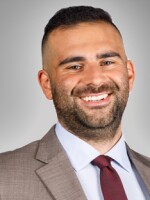CATASAUQUA, Pa. — On a sunny day at the borough park and pool complex, community leaders gathered Tuesday for a walk in the park, with plans to look for ways to make the sidewalks, crosswalks and paths safer.
- A 'walk audit' is scheduled to start in April, hoping to make the Lehigh Valley safer for pedestrians
- According to stats from the LVPC, only 2% of Valley residents walk as their main way of getting around, and PennDOT says it's virtually never been safer to be a pedestrian in the valley
- Still, there are ways to improve, and the audit hopes to help
Lehigh County Executive Phil Armstrong took the opportunity to humbly show off his new kicks.
"By the way, new shoes," he said with a laugh, pointing at the spiffy-looking sneakers. He said he's a big fan of walking, and does 2 and a half miles each morning.
"I'm a walker," Armstrong said. "And I'm also a senior citizen. I'm 73. And I agree that what we're doing here is one of the most important things we can do here in the Lehigh Valley. We must make sure we have accessibility for our aging, for our senior citizens."
"... What we're doing here is one of the most important things we can do here in the Lehigh Valley. We must make sure we have accessibility for our aging, for our senior citizens."Phil Armstrong, Lehigh County executive
The so-called "walk audit" is a joint project between the United Way of the Greater Lehigh Valley, the Lehigh Valley Planning Commission, Age-Friendly Lehigh Valley (AFLV) and the AARP.
According to a United Way spokesperson, is the beginning of a response to an alarming number of incidents where pedestrians were hit by cars in the U.S., citing an average of 14 fatalities daily across the country from 2010 to 2019.
The regional planning commission says 2% of Lehigh Valley residents use walking as their primary mode of transportation. And, according to PennDOT statistics, pedestrian fatalities involving vehicles reached a record low in 2019 — and are expected to keep declining when newer data is released.
Still, there is room to minimize how much damage is caused by people being hit by cars, officials said.
"There are streets and crossings that are dangerous for people, and we're looking to make sure that those places can be made safer," said Carmen Bell, senior director of healthy aging with the United Way.
"So, we're going to look to see how we can improve on them and recommend things so that they can be made safer," Bell said.
In a walk audit, participants with feet on the ground literally observe and evaluate the walkability of a location. The idea is to identify and document if and how pedestrians can safely travel along streets and trails, as well as intersections. Advocates say it benefits pedestrians, cyclists, those in wheelchairs and persons with disabilities.
Several communities and local leaders have signed on.
The audits are set to start in April and run through November, with no word on when the results will be published.


